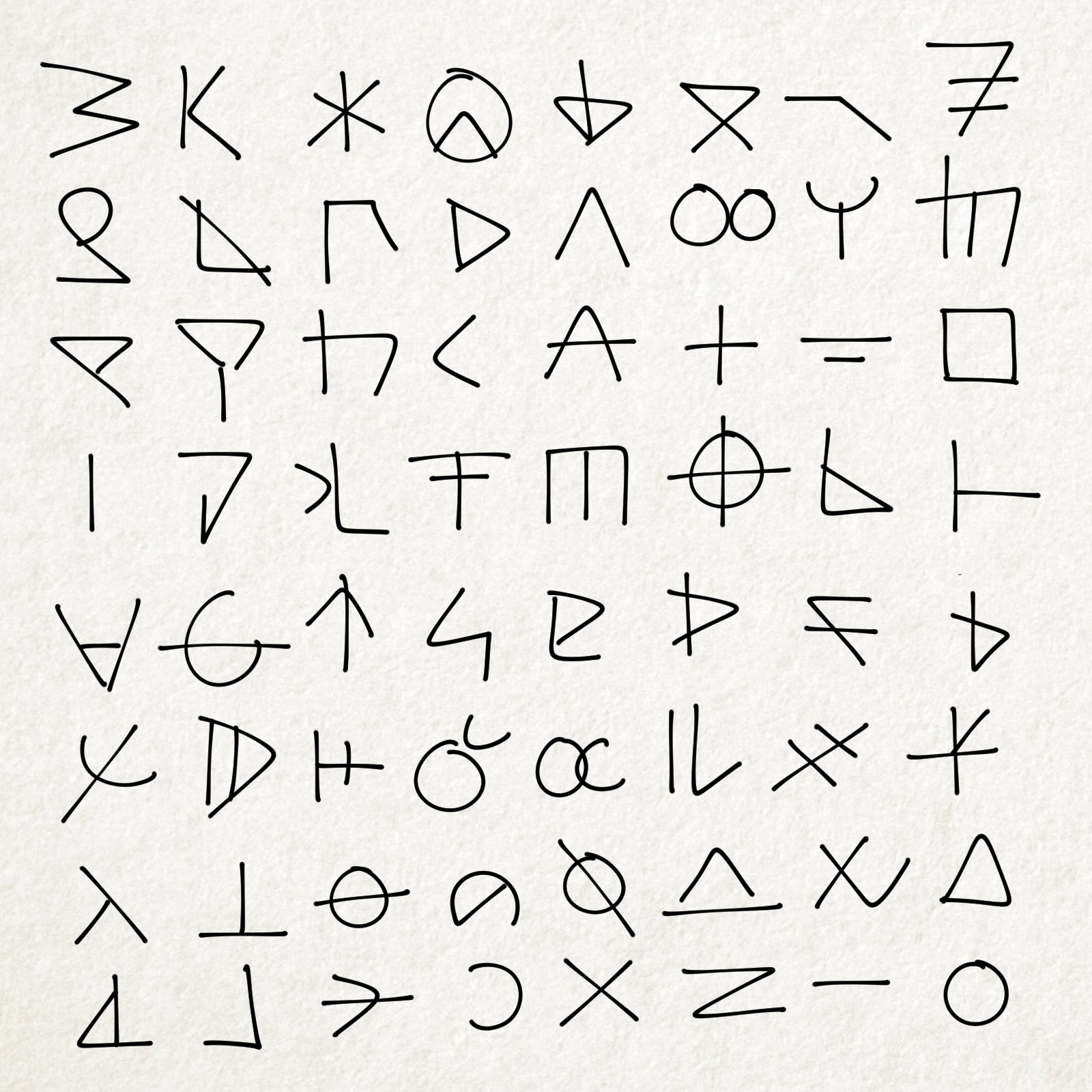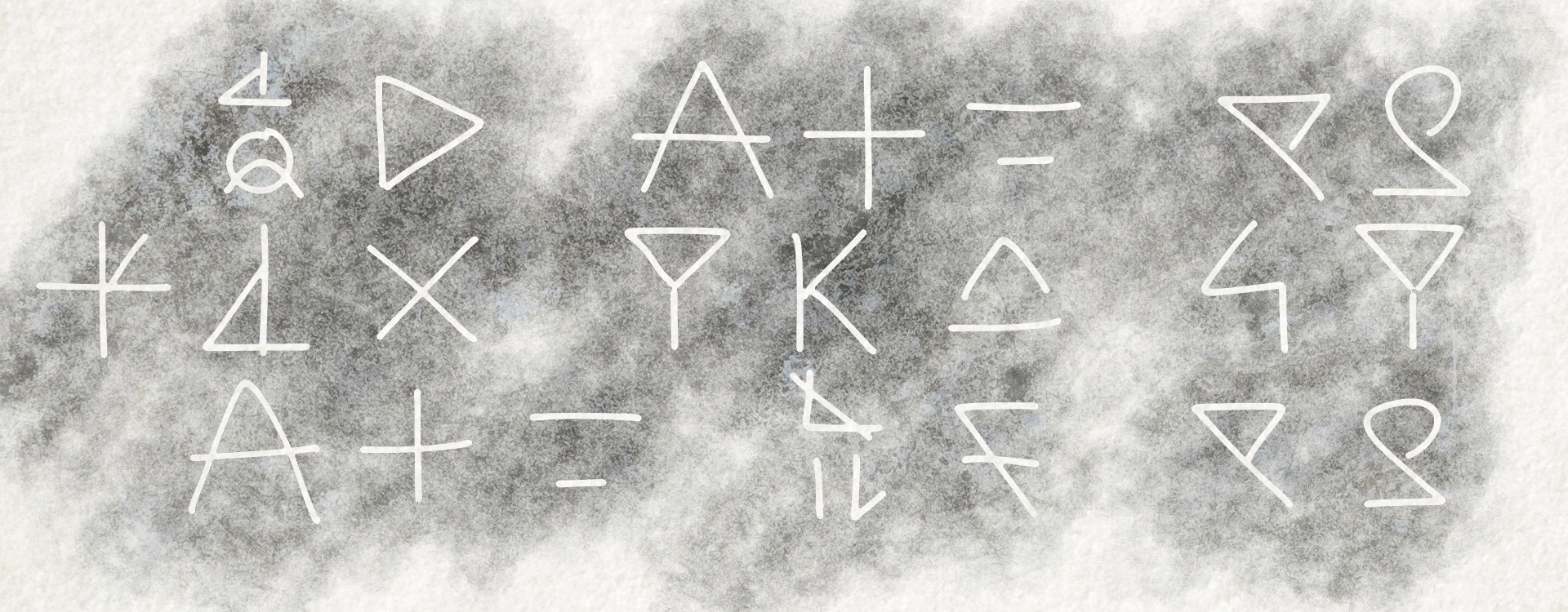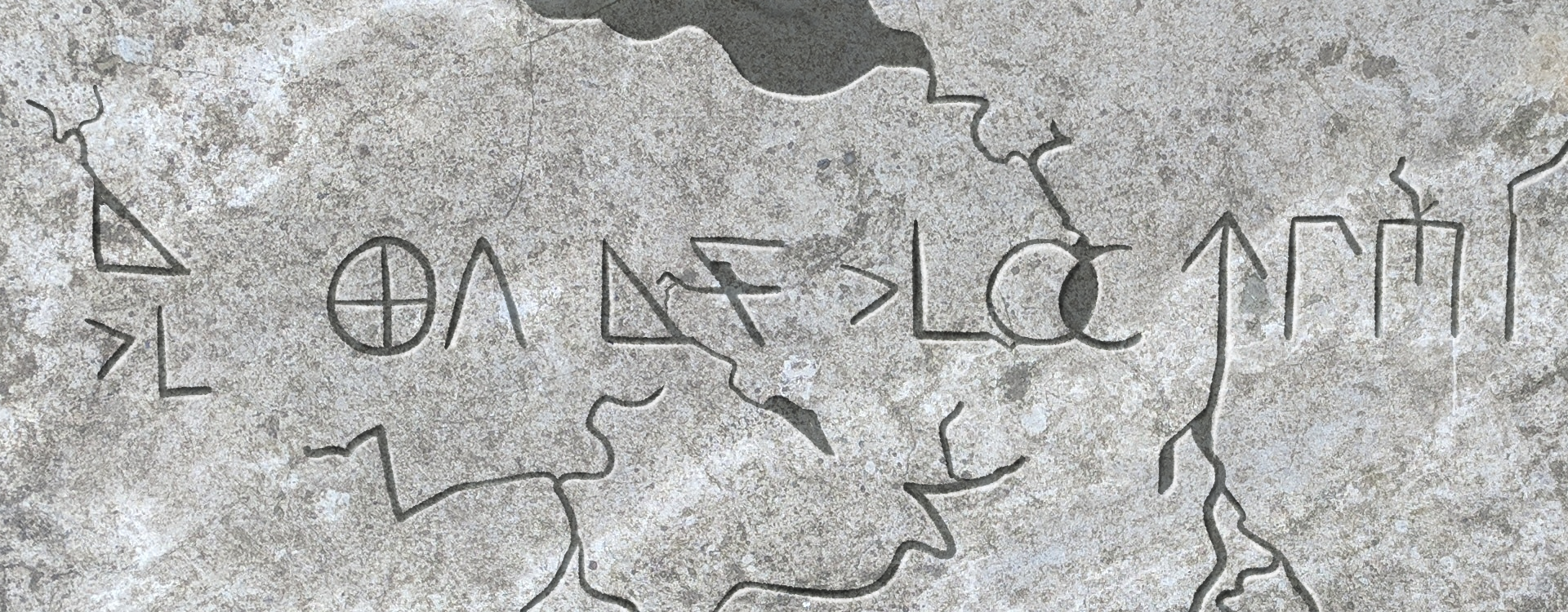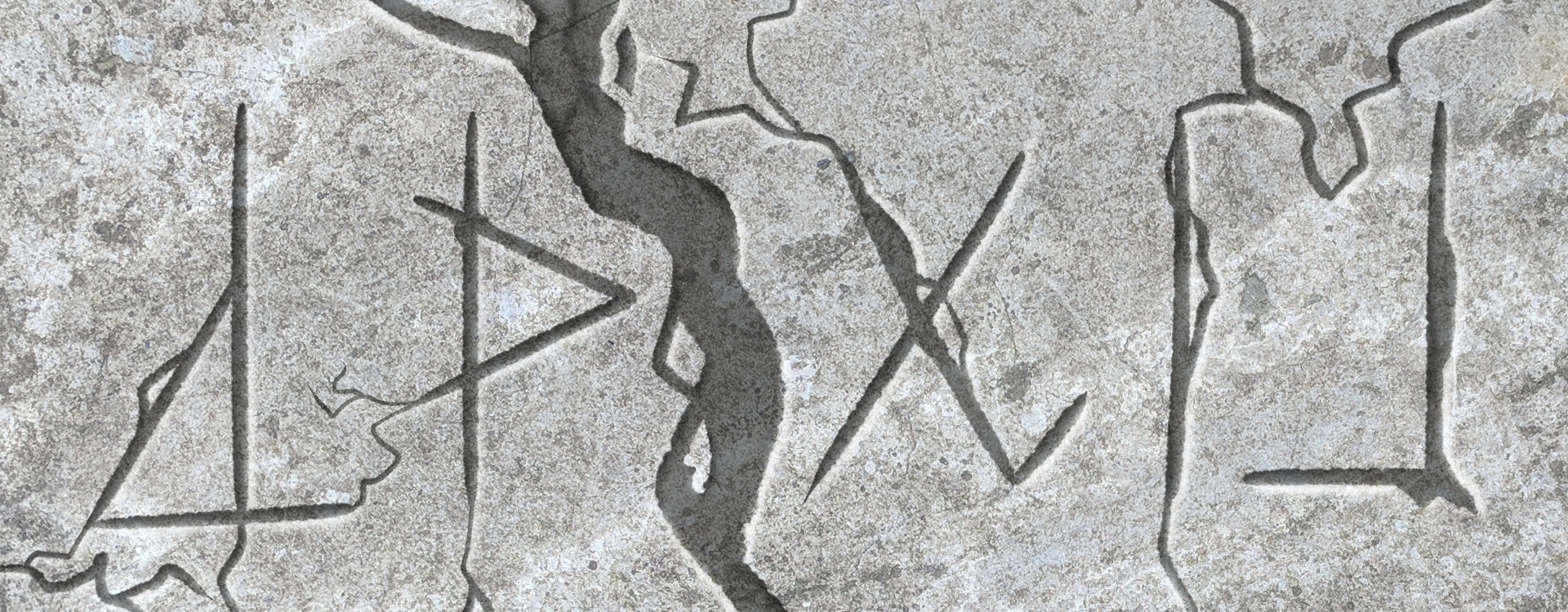"In my mind, it can't possibly be an alphabet."
"Why not? I say there are more than enough symbols to account for it. By my count it more than doubles our inventory."
"Certainly. But if these gaps are spaces between words, you then suggest most words are only 2-4 letters long."— A discussion of the Sina Script by two researchers
The Sina language is the one presumed to be spoken by the
Sina People, a lost civilisation hailing from
East Abravost along the Chalsei Sha river. While some things can be assumed about the culture of the Sina, very little is concretely known of their language.
Script

Catalogue of known Sina Language symbols by Isaac Thompson
The majority of scholarship on the Sina language revolves around its script, which has been found carved on stone and wood at many Sina sites.
According to most researchers, there are a minimum of 64 signs used for writing down the Sina language, allowing for the possibility of some undiscovered symbols. There is some debate with regards to so-called 'composite signs', which appear to stack two other signs vertically, and whether these are best considered separate symbols in their own right or something more akin to a ligature.
Due to being carved, the script lacks any clear means of identifying the direction in which it should be read. Consensus has formed on it being a right-to-left bottom-to-top script, with the latter deduced from how it is written on the hollow trees at the centre of sites like Shiang Jomjite, and the former assumed based on how certain symbol combinations recur frequently in a way which suggests titles or modifiers.

Rubbing of carvings on Shiang Jomjite Trunk #4 by Isaac Thompson
While definitive meanings for symbols or sets of symbols cannot be determined, it currently appears that many existing examples of Sina script are nouns. This is due to sets of signs recurring in the same contexts - on the hollow trunks, the symbols at the right hand side of the above picture appear frequently, with some researchers suggesting they might be title markers like Miss or Mister. On the keystones of some buildings, other sets will occur, possibly denoting the purpose of the building or ownership of it, in the manner someone might hang an inn sign.
There are exceptions to this general trend, such as the Kámcholte Stone, found at the base of the trunk at the Kámcholte site. No segments of this particular writing have been found repeated elsewhere with the exception of the composite sign on the far left, which has no contextually-discernible meaning. It may possibly describe the site itself, perhaps denoting its foundation, though this would be unusual as no other site has done this.

Kámcholte Stone by Isaac Thompson
Corpus
All examples of the Sina script have been found along the old course of the Chalsei Sha river, as well as a rare few along the coast where the river meets the
Amara Ocean. This despite there being many other Sina sites not in this region, such as Houngchol in the north, where no examples of the script have been found. As a result, it is a common theory that the script developed in settlements along the river and spread along trade routes, failing to make it far inland.
The greatest quantity of inscriptions have been found at the sites of Shiang Jomjite and Siishol, with the former noted as providing examples of nearly every sign thus far identified.
Map of Major Sina Cultural Sites













I love the mysteries surrounding this language. I think I would be of the opinion that it is a syllabary too.
Explore Etrea | March of 31 Tales